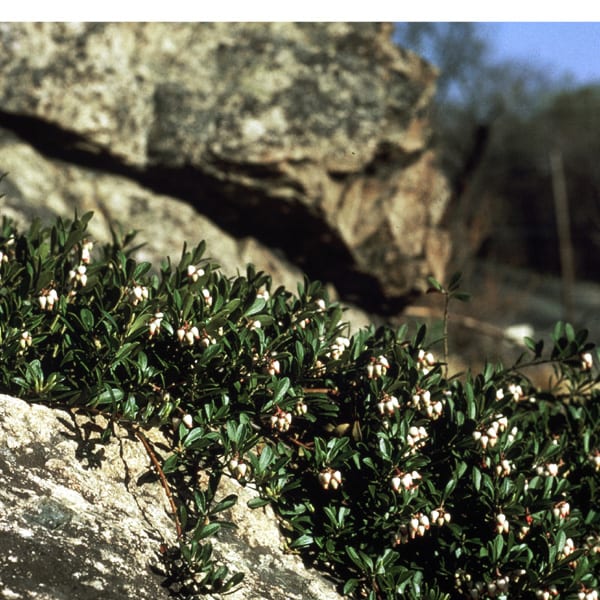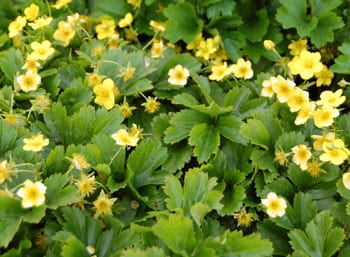I am looking for a native groundcover recommendation for my yard. It is a slope between wetlands and uplands that gets full sun exposure. Ideal plant would be perennial evergreen that will help suppress weeds and is low maintenance and drought resistant. Thanks for any recommendations!
In addition to selecting groundcover options, the other challenge with this response is whether or not the solution is commercially available. I think a proper recommendation for this situation could be juniperus horizontalis. This is a low growing evergreen that is very drought tolerant and takes full sun. Most available in the marketplace would be cultivated selections of the plant such as Bar Harbor and Wiltoni.
If there is some shade, there are other alternatives such as bearberry and Pennsylvania sedge that may also be suitable. Full sun environments are usually great places for grass species such as deschampsia or bluestem, but of course these plants experience a winter dormancy.
~Matt Gettinger, Long Island Natives, Eastport, NY
We have Waldstenia (recently switched to Geum, I believe) frageroides, growing on a bank in full sun. It’s thought of as a shade groundcover, but its thriving here. It would not do well in dry soil, but in a decent soil and watered only when really needed, it’s doing great. It is evergreen, blooms yellow in the spring, and definitely is a weed smotherer. Native to Vermont and Western Mass.
If it is too dry for this, perhaps consider planting Little Bluestem Grass, Schizachyrium scoparium. This grass thrives in hot sunny conditions. A grass native to our area (Northern New England).
~Peter Van Berkum, Van Berkum Nursery, Deerfield, NH
I’d go for one of the following:
- Bearberry (Arcostaphylos uva-ursi) – A woody groundcover that is carefree once established. Great evergreen glossy leaf that turns red for the winter and good fruit set. Best planted in early fall and should be fine after some supplemental watering to establish until the ground freezes. I recommend shaking most of the potting mix off the roots when planting so it roots into native soil. They are sensitive to overwatering, and it’s easier to manage water with more uniform soil composition. Make sure that no branches get buried in mulch if it’s being used to establish. Mulch coverage is particularly detrimental to this plant.
- Mountain Pinks (Phlox subulata) – Evergreen perennial that is a bit low for my taste in this application, but the criteria is a bit of a tough ask. Very drought tolerant once established, roots need to be coaxed into sinking deep, so it’s extra important to water thoroughly and less frequently. Twice a week is generally plenty. Watch out for black root rot which can happen if it is unusually wet when installed. Plenty of biological fungicides work, we have used Bacillus subtilis strains with great success at the first sign of an issue.
- Creeping Juniper (Juniperus horizontalis) – I know, not the most creative of solutions, but a viable one. Cultivar ‘Bar Harbor’ get a bit taller, which is probably best so that low lying weeds aren’t visible. Selections of Field Juniper (J. communis) like ‘Effusa’ or var. depressa would also work but are a bit more coarse in foliage and habit.
Sorry to say that’s all I can come up with that covers all the requirements. Tough piece is the combination of drought tolerant and evergreen. There are plenty of great native deciduous groundcovers that are very reliable: Gro-Low Fragrant Sumac, Hay Scented Fern, Northern Bush Honeysuckle (Diervilla lonicera), etc., but the evergreen criterion really narrows it down.
~Darryl Newman, Planters’ Choice, LLC
ELA members have spent hundreds of hours learning the best ecological solutions to problems in the landscape. You can benefit from all that accumulated knowledge by posing a question to our experts. If you are stumped by a problem in your landscape or are looking for a second opinion on a potential solution, ask ELA’s Eco-Pros. Send your question to ela_new@verizon.net. And if you need additional help, refer to the listing of ELA Professionals.
***
Each author appearing herein retains original copyright. Right to reproduce or disseminate all material herein, including to Columbia University Library’s CAUSEWAY Project, is otherwise reserved by ELA. Please contact ELA for permission to reprint.
Mention of products is not intended to constitute endorsement. Opinions expressed in this newsletter article do not necessarily represent those of ELA’s directors, staff, or members.




